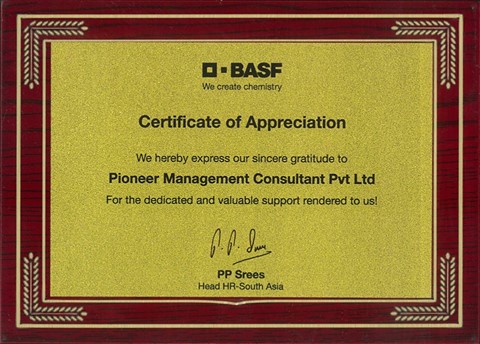"As a leader, it’s not your job to do the work; it’s your job to build and empower a team to do the work." – Simon Sinek
In the labyrinth of entrepreneurship, the dichotomy between "working on the business" and "working in the business" is the fulcrum that separates success from stagnation. It's a fundamental shift in mindset that shapes the destiny of ventures, determining whether they flourish or falter. While both endeavors are crucial, understanding the distinction and knowing when to pivot between the two can be the linchpin to sustained growth and innovation.
Understanding the Dichotomy:
At its essence, "working in the business" pertains to the day-to-day operations: managing tasks, addressing immediate needs, and ensuring the wheels keep turning. Conversely, "working on the business" involves a broader perspective. It’s about strategizing, envisioning long-term goals, and crafting frameworks for sustainable success.
Michael Gerber, in his book "The E-Myth Revisited," famously encapsulates this dichotomy, stating, "The difference between great people and everyone else is that great people create their lives actively, while everyone else is created by their lives, passively waiting to see where life takes them next."
Case Studies Showcase the Shift:
Starbucks: A Case in Point
Starbucks' transformation from a humble coffee bean retailer to an international behemoth is a testament to working on the business. Howard Schultz, its former CEO, envisioned Starbucks not just as a coffee shop but as an experience, fostering a culture of community and quality. His focus on the brand experience, expansion strategies, and innovation catapulted Starbucks into the global powerhouse it is today.
Apple Inc.: Innovation Beyond Boundaries
Apple under Steve Jobs exemplifies the importance of working on the business. Jobs' emphasis on groundbreaking innovation and user-centric design revolutionized multiple industries. His vision went beyond the mere creation of products; it encompassed the orchestration of entire ecosystems, shaping customer experiences and market dynamics.
"Working on the business means thinking ahead, setting goals, and prioritizing tasks." – Richard Branson
Here are the top 12 tips to transition from working in the business to working on the business:
1. Delegate and Empower: Identify tasks that can be delegated to capable team members. Empower them with responsibility, fostering a culture of trust and ownership within your organization.
2. Set Clear Objectives: Define long-term goals and break them down into achievable milestones. This clarity helps in aligning the team's efforts towards a shared vision.
3. Time Blocking for Strategy: Allocate specific time slots in your schedule dedicated solely to strategic thinking and planning. Guard these blocks of time as you would any other crucial task.
4. Develop Systems and Processes: Create streamlined systems and processes that allow day-to-day operations to run efficiently without constant supervision, freeing up time for strategic initiatives.
5. Invest in Training and Development: Prioritize continuous learning for yourself and your team. Equip them with the skills and knowledge needed to handle responsibilities effectively, reducing micromanagement.
6. Cultivate a Leadership Mindset: Shift from being an operator to a leader. Focus on guiding and mentoring your team rather than being deeply involved in every operational detail.
7. Analyze and Adapt: Regularly review performance metrics and market trends. Use this data to adapt strategies, make informed decisions, and stay ahead of the curve.
8. Foster Innovation and Creativity: Create an environment that encourages innovative thinking. Allocate resources for experimentation and idea generation, driving continuous improvement.
9. Embrace Technological Advancements: Stay abreast of technological advancements relevant to your industry. Embrace tools and software that streamline processes, enhance productivity, and offer competitive advantages. Invest in automation where feasible to reduce manual workload and allow more time for strategic planning.
10. Enhance Digital Brand Visibility: In today's digital landscape, a strong online presence is imperative. Invest in digital marketing strategies, optimize your website for search engines, leverage social media platforms, and create engaging content to increase brand visibility. Engage with your audience online to build a community around your brand, fostering trust and loyalty. By embracing technology and enhancing digital brand visibility, businesses can expand their reach, optimize operations, and stay relevant in an increasingly competitive market, while freeing up valuable time for strategic endeavors.
11. Outsource Non-Core Functions: Consider outsourcing tasks that are not central to your business's core competency. This allows your team to focus on strategic areas that drive growth.
12. Prioritize Self-Care and Reflection: Allocate time for self-reflection and rejuvenation. A fresh perspective often emerges from moments of relaxation, leading to better decision-making.
These tips collectively foster a shift in perspective and action, allowing entrepreneurs and business leaders to elevate themselves from the day-to-day grind and focus on steering their businesses towards sustainable growth and success.
Striking the Balance:
Achieving a balance between these two paradigms is pivotal. While the immediacy of day-to-day operations cannot be ignored, neglecting the broader vision often leads to stagnation. Successful entrepreneurs adeptly shuffle between the micro and macro perspectives, orchestrating a symphony of tasks while envisioning the grander melody.
Conclusion:
In the grand tapestry of entrepreneurship, the ability to work on the business is an art form. It requires mastering the balance between the immediate needs and the long-term vision. Embracing this ethos fosters innovation, resilience, and adaptability, elevating businesses from the ordinary to the extraordinary.
To truly thrive, entrepreneurs must continually pivot between the two mindsets, nurturing the present while cultivating the seeds of tomorrow's success. Remember, it's not just about working hard; it's about working smartly, strategically, and purposefully towards a future that transcends the present challenges.
__________________________________________
Sarla Sharma - A people person, ambitious and driven. thrives on challenges and constantly sets goals for herself, so she has something to strive towards. She is never comfortable with settling and is always looking for an opportunity to do better and achieve greatness
#pmcpl #pioneermanagementconsultantpvtltd #business #vision #enterprenuer #StrategicBizGrowthNow #VisionaryLeadership #BusinessStrategyShift #InnovateToElevate #FutureFocusedBusiness #DigitalBrandSuccess



Leave a comment